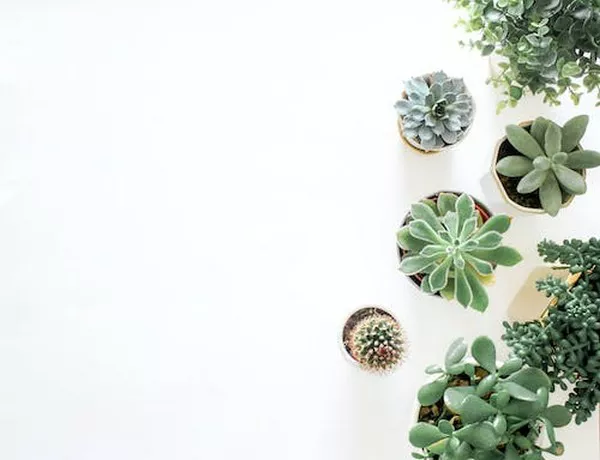Succulents have become increasingly popular among plant enthusiasts due to their unique shapes, vibrant colors, and easy care requirements. These hardy plants are native to arid regions and have adapted to store water in their leaves, stems, and roots, making them excellent choices for both indoor and outdoor gardens. However, to ensure their health and longevity, it is crucial to provide them with the right planting environment. In this comprehensive guide, we will explore what succulents need to be planted in, offering valuable insights and expert advice on soil, containers, sunlight, water, and other essential factors for successful succulent growing and care.
The Ideal Soil Mix for Succulents
Succulents thrive in well-draining soil that mimics their natural habitat. Standard potting mixes are often too moisture-retentive for succulents, leading to root rot and other issues. The ideal soil mix for succulents is one that allows excess water to escape quickly, ensuring the roots do not become waterlogged. A common and effective succulent soil mix includes:
1.Perlite: Perlite is a lightweight, porous material that promotes drainage and aeration in the soil. Its presence prevents the soil from compacting, enabling the roots to breathe and grow healthily.
2. Coarse Sand: Coarse sand improves drainage and prevents soil compaction. It also adds weight to the soil, providing stability for taller succulent varieties.
3. Succulent or Cactus Soil: Specialized succulent or cactus soil mixes are available commercially and are formulated to provide the right balance of nutrients and drainage for succulent plants.
Mix these components in equal parts to create a well-draining and nutrient-rich soil mix, ideal for planting succulents in containers or garden beds.
Selecting the Right Containers for Succulents
Choosing the right containers for succulents is essential, as they play a crucial role in maintaining the proper moisture levels for these water-storing plants. Terracotta pots are a popular choice for succulents due to their porous nature, which helps wick away excess moisture from the soil. However, other containers made of materials like ceramic, cement, or even hypertufa can also be suitable, provided they have drainage holes.
Drainage holes are critical for succulents, as they prevent water from accumulating at the bottom of the container and causing root rot. Ensure that your chosen containers have sufficient drainage holes to maintain the health of your succulents.
Understanding Sunlight Requirements for Succulents
Succulents are sun-loving plants that require bright light to thrive. They typically prefer several hours of direct sunlight each day, but the specific sunlight requirements can vary depending on the succulent species. When choosing a planting location for your succulents, consider the following:
1.Indoor Placement: For indoor succulent care, place your plants near a south-facing window or under grow lights. Avoid placing them too close to heating or cooling vents, as temperature fluctuations can stress the plants.
2. Outdoor Placement: In outdoor settings, choose a location that receives ample sunlight throughout the day. Avoid placing succulents in areas with heavy shade or areas prone to frost.
Watering Succulents Wisely
One of the most critical aspects of succulent care is watering. While succulents are drought-tolerant, they still need regular watering to stay healthy. The key is to water them sparingly but thoroughly. Follow these watering guidelines for succulents:
Allow Soil to Dry: Before watering your succulents, ensure that the soil has completely dried out. Insert your finger into the soil about an inch deep, and if it feels dry, it’s time to water.
Water at the Base: When watering succulents, aim for the soil at the base of the plant and avoid getting water on the leaves, as this can lead to rot.
Watering Frequency: During active growth periods (usually spring and summer), water more frequently, but still let the soil dry between watering sessions. In dormant periods (typically winter), reduce watering to allow the plant to rest.
Drainage is Key: As previously mentioned, the importance of well-draining soil cannot be overstated. Adequate drainage ensures that excess water is expelled, preventing root rot and other water-related issues.
Providing Adequate Ventilation
Good airflow is essential for succulent health, especially for those kept indoors. Proper ventilation helps prevent moisture buildup and decreases the risk of fungal diseases. When growing succulents indoors, consider opening windows or using fans to ensure adequate air circulation around your plants.
Fertilizing Succulents
Succulents have relatively low nutrient requirements, and excessive fertilization can be harmful. Use a balanced, diluted fertilizer formulated for succulents, and apply it sparingly during the active growth period. Over-fertilizing can lead to leggy growth and reduced water storage capacity in the plant.
Conclusion:
Succulents are fascinating plants that captivate with their striking appearance and adaptability. By providing them with the right planting environment, including well-draining soil, suitable containers, proper sunlight exposure, mindful watering, and adequate ventilation, you can ensure the health and vitality of your succulents. These resilient plants are perfect for both indoor and outdoor gardening and can reward you with years of beauty and enjoyment. Armed with the knowledge and insights from this comprehensive guide, you are now equipped to embark on your succulent-growing journey with confidence and success.


